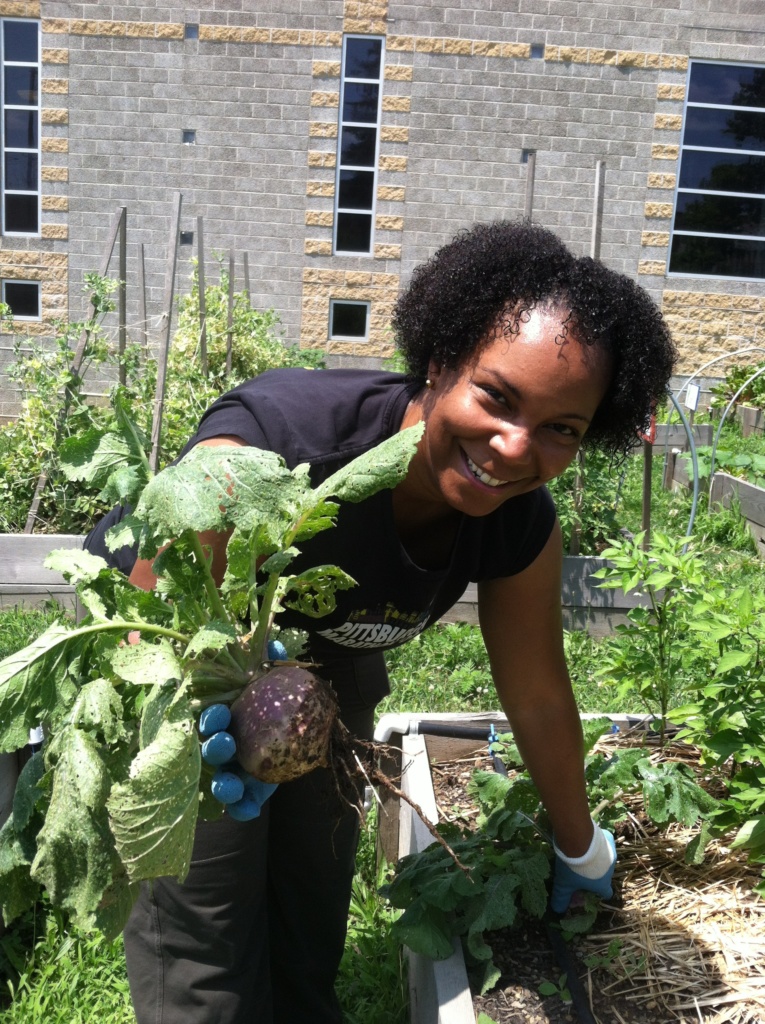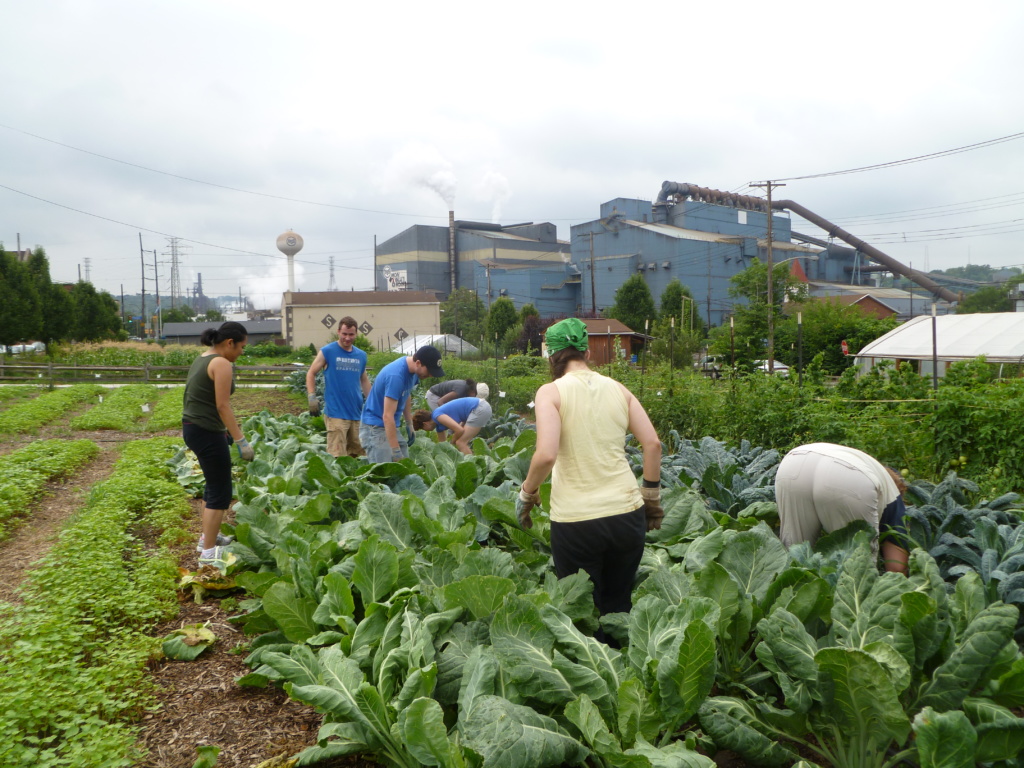Check in weekly, on Wednesdays, to read our new post on gardening, harvesting, and making use of that fine, extra-local produce! We’ll share tips and techniques, gleaned from our urban farms and gardens. Email info@growpittsburgh.org with any topics you’d like us to cover.
Garden beds can take many forms. From large, in-ground gardens, to a sunny patch of soil by some steps, to raised beds, window boxes, and a wide assortment of containers, the possibilities are endless!
So what are the best ways to create a new garden area?
Containers are the quickest gardening area to create – they simply require a vessel and potting mix. They are impermanent and can be easily replanted if a crop fails. However, containers must be large to accommodate most edible plants, and the smaller growing space requires very regular watering.
To create a container garden:
- Select plants that will grow well in smaller spaces. Herbs and flowers are a great fit. To plant vegetables in containers, choose dwarf or compact varieties, and place each plant in the largest container available. For instance, peppers and tomatoes do best with one plant in a 5-gallon container or larger.
- Make sure containers have drainage holes.
- Fill with sterile potting mix (not garden soil) and add compost or organic fertilizer.
- Water and fertilize regularly throughout the season. Consider creating or purchasing a self-watering container to cut down on day-to-day maintenance of the garden.
Raised beds need a little more effort to set up. They are more permanent than most containers. If they are lined, they can act as a large container. If unlined, they can add a defined area of rich soil on top of existing land.
To create a raised bed garden:
- Find a reasonably flat area with 6 hours of sun per day or more.
- Test the soil to determine whether heavy metals are present.
- If lead or other heavy metals contaminate the soil, plan to line the bed with landscape fabric or a commercially available liner.
- Purchase a pre-fabricated bed or materials to build a bed (can include rot-resistant wood like cedar or white oak, bricks, or stone). Build and place bed on desired location.
- Place cardboard over the ground to smother weeds and turf, then fill with a 70:30 mixture of topsoil and compost. (For lined beds, simply line the bed and fill with soil – no cardboard is needed.)
- Plant!
In-ground beds are a great option when there is decent soil available, and the garden is not in an area with heavy foot traffic. In-ground beds need a little prep and maintenance, and they can be productive garden spaces for years to come.
To create an in-ground bed:
- Determine where the garden will go. Vegetable gardens need 6 or more hours of sun per day.
- Test the soil to determine whether heavy metals are present.
- If lead or other heavy metals contaminate the soil, consider testing a different location or opting for a lined raised bed or container garden. Click here for government recommended limits for heavy metals in garden soil.
- Consider walkways – how wide should they be so you can comfortably work in the garden beds? Also, determine whether you will leave them as turf, plant a ground cover like clover, or create pathways with woodchips. Living walkways will need to be mowed and maintained so they don’t overtake the beds. Placing edging around the beds is an option to keep walkway plants from growing into the beds.
- To create a garden on turf or weedy areas, choose one of the following methods, then add compost and amendments based on soil test recommendations:
- For small garden beds, turn turf upside down with a shovel.
- Rent a sod cutter to remove turf from large garden areas. Compost turf or reuse on other areas. Use a rototiller to loosen the garden soil.
- Use a rototiller to break down turf and incorporate it into the garden area. (Wait for a week or two to plant small seeds, as the seedbed will be rough until the grass decays.)
- Bury turf under a layer of cardboard. Layer organic materials like grass clippings, leaves, old manure, and compost.
- Plant!
There are lots of different ways to create a garden space. Hopefully these ideas have got you thinking about how to create more space to grow into! Happy gardening.


